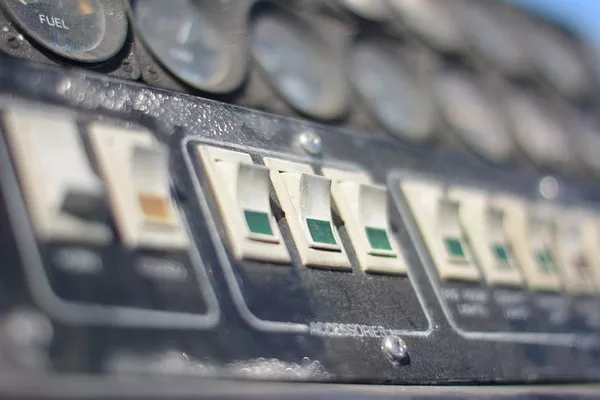Heavy electrical equipment plays a pivotal role in various industries, providing the backbone for power generation, transmission, and distribution systems. These massive machines are essential for ensuring a stable and reliable supply of electricity to homes, businesses, and industries. In this comprehensive guide, we will delve into the world of heavy electrical equipment, exploring what it is, its types, applications, and the crucial role it plays in modern society.
Defining Heavy Electrical Equipment
Heavy electrical equipment, also known as high voltage or high-power electrical equipment, encompasses a broad category of machinery designed to handle large amounts of electrical energy. These devices are typically used in power generation plants, substations, and industrial facilities to manipulate, control, or transform electrical energy into various forms for efficient transmission and utilization.
Types of Heavy Electrical Equipment
1. Transformers:
Transformers are fundamental heavy electrical equipment that play a crucial role in electrical power systems. They are designed to change the voltage level of electrical energy, either increasing it (step-up transformer) for long-distance transmission or decreasing it (step-down transformer) for safe distribution to consumers. Transformers are found in substations and power plants and are essential for voltage regulation and power quality improvement.
2. Generators:
Generators are responsible for converting mechanical energy into electrical energy. These heavy machines are commonly found in power plants and come in various types, including steam turbines, gas turbines, and hydroelectric generators. They produce electricity through the rotation of a rotor within a magnetic field, creating an electrical current. Generators are the heart of power plants, ensuring a steady supply of electricity to the grid.
3. Circuit Breakers:
Circuit breakers are safety devices used to protect electrical circuits and equipment from overloads, short circuits, and faults. They interrupt the flow of electricity when a fault is detected, preventing damage to downstream equipment and minimizing the risk of electrical fires. High-voltage circuit breakers are designed for use in substations and power distribution networks.
4. Switchgear:
Switchgear is a collective term for a range of electrical equipment used to control, protect, and isolate electrical circuits and components. It includes circuit breakers, switches, fuses, and relays. Switchgear is essential for the safe and reliable operation of electrical systems, particularly in substations and industrial settings.
5. Power Transformers:
Power transformers are specialized transformers used to transmit electricity at very high voltages over long distances. They are critical for the efficient transmission of electricity from power plants to substations, where the voltage is then reduced for distribution to consumers. Power transformers are colossal machines that require careful design and maintenance to ensure grid reliability.
Applications of Heavy Electrical Equipment
Power Generation:
Heavy electrical equipment is at the heart of power generation plants, where generators, transformers, and switchgear work in unison to convert various energy sources (such as coal, natural gas, nuclear, or renewables) into electrical energy. These facilities produce the electricity that powers homes, businesses, and industries.
Electrical Grids and Substations:
Electricity generated at power plants is transmitted through high-voltage transmission lines to substations. At substations, heavy electrical equipment, including transformers and circuit breakers, is used to control voltage levels, manage power flows, and distribute electricity to local distribution networks.
Industrial Applications:
Heavy electrical equipment finds extensive use in industrial facilities where high-power machinery and processes require specialized electrical infrastructure. These facilities use transformers, switchgear, and motor control centers to maintain reliable operations.
Renewable Energy:
In the transition to cleaner energy sources, heavy electrical equipment is crucial for harnessing energy from renewable sources like wind and solar. Transformers, inverters, and other equipment are used to convert and integrate renewable energy into the grid.
The Role of Heavy Electrical Equipment in Grid Reliability
Grid reliability is of paramount importance to ensure a continuous and stable supply of electricity to consumers. Heavy electrical equipment plays a critical role in achieving and maintaining grid reliability in several ways:
Voltage Regulation: Transformers are essential for regulating voltage levels, ensuring that electricity is delivered at the right voltage to consumers. This helps prevent voltage fluctuations and equipment damage.
Fault Protection: Circuit breakers and protective relays quickly disconnect faulty equipment or circuits from the grid, minimizing downtime and preventing widespread outages.
Power Quality: Heavy electrical equipment helps maintain power quality by managing factors like harmonic distortion and reactive power. High-quality power reduces the risk of equipment damage and improves the efficiency of electrical systems.
Capacity Enhancement: Upgrading and expanding heavy electrical equipment can increase the capacity of the grid, allowing it to meet growing energy demands.
Integration of Renewable Energy: Heavy electrical equipment facilitates the integration of renewable energy sources into the grid, ensuring a smooth transition to cleaner energy.
Maintenance and Safety Considerations
Maintaining heavy electrical equipment is essential to ensure its reliability and safety. Regular inspections, testing, and maintenance routines are conducted to detect and address issues before they lead to costly failures. Additionally, safety measures and protocols are crucial when working with or near high-voltage equipment to protect personnel and prevent accidents.
Conclusion
Heavy electrical equipment is the backbone of modern electrical power systems, supporting power generation, transmission, and distribution networks. These complex and robust machines are essential for providing a reliable and stable supply of electricity to meet the needs of homes, businesses, and industries. As we continue to rely on electrical power for our daily lives, heavy electrical equipment will remain a critical component of our infrastructure, driving innovation and progress in the energy sector. Understanding its importance and proper maintenance is key to ensuring the reliability and sustainability of our electrical grids.

